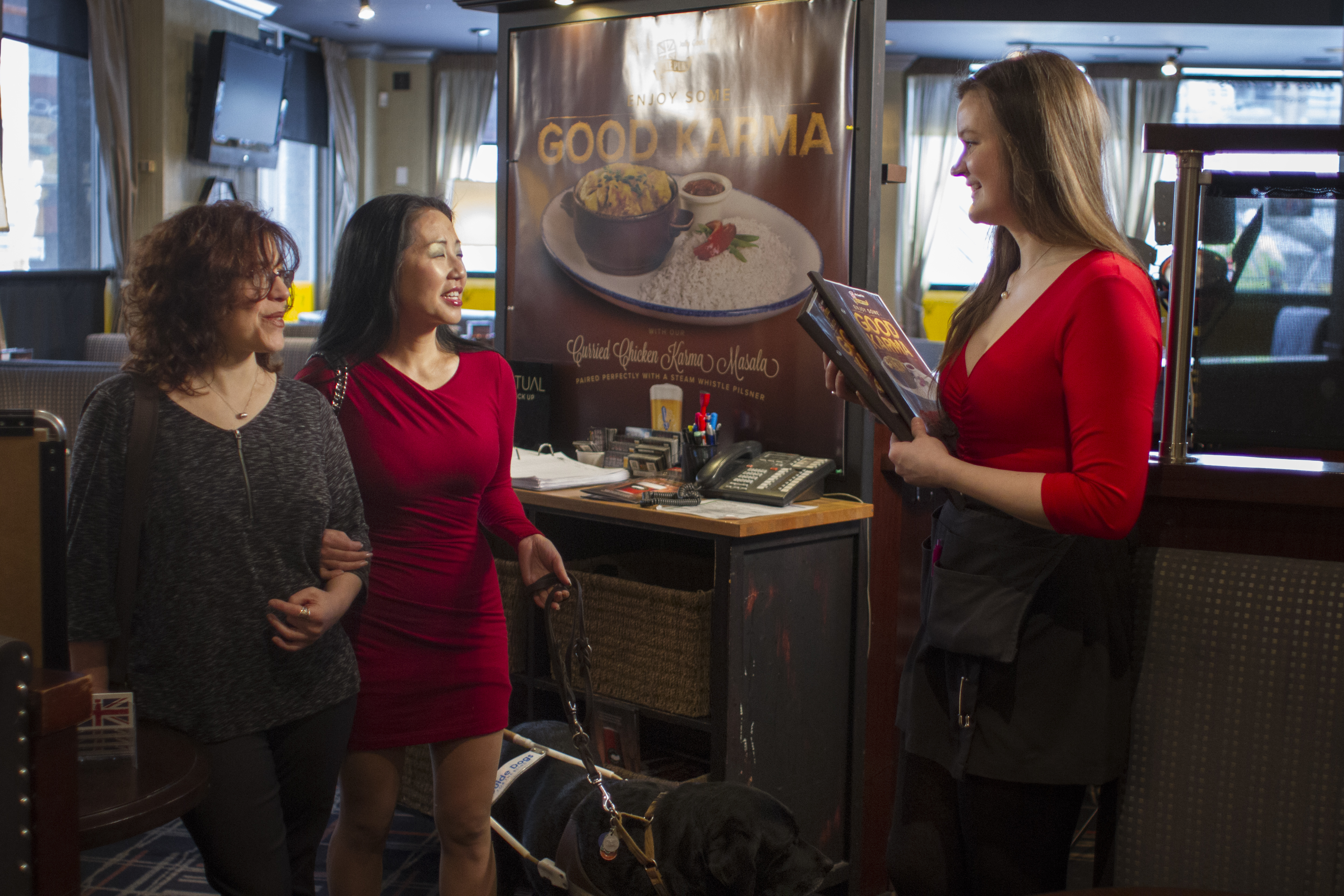People with Vision Loss
Vision loss can restrict someone’s ability to read documents or signs, locate landmarks or see hazards. Some people may use a guide dog, a white cane, or a support person such as a sighted guide, while others may not.
A person who accompanies a person with a disability to help with communication, mobility, personal care, medical needs, or with access to goods, services or facilities.
Tips:
- When you know someone has vision loss, don't assume the person can’t see you. Not everyone with vision loss is totally blind. Many have some vision.
- Identify yourself when you approach and speak directly to your customer if they are with a companion.
- Ask if they would like you to read any printed information out loud to them, such as a menu, a bill or schedule of fees.
- When providing directions or instructions, be precise and descriptive (for example, “two steps in front of you” or “a metre to your left”). Don’t say “over there” or point in the direction indicated.
- Offer your elbow to guide them if needed. If they accept, lead – don’t pull.
- Identify landmarks or other details to orient the person to the surroundings. For example, if you’re approaching stairs or an obstacle, say so.
- If you need to leave the customer, let them know by telling them you’ll be back or saying goodbye.
- Don't leave your customer in the middle of a room – guide them to a comfortable location.


